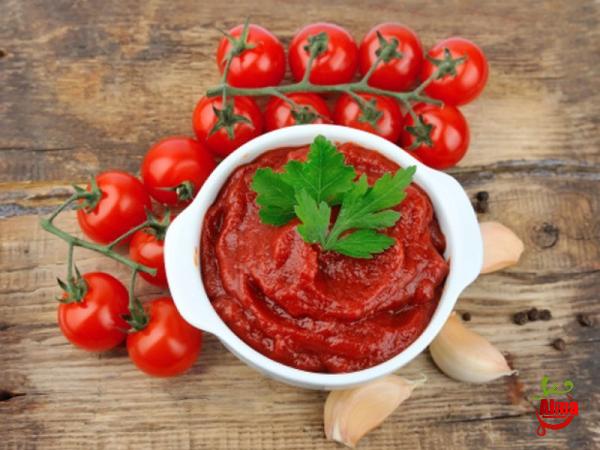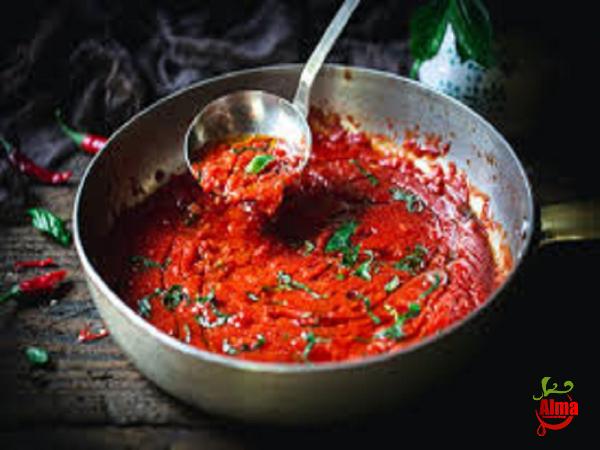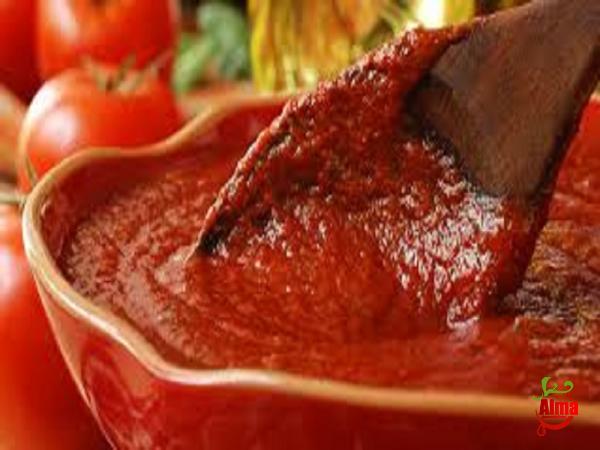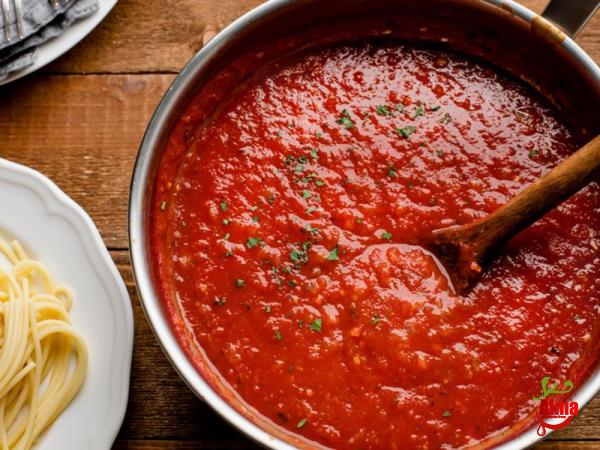Understanding the Differences and Benefits Introduction: Tomato products, such as tomato concentrate and tomato paste, play a vital role in the culinary world and are widely used in various dishes and recipes. However, many people often confuse tomato concentrate and tomato paste, assuming they are interchangeable. In reality, these two tomato-based products differ significantly in terms of their production processes, flavor profiles, and culinary applications. This article aims to provide a comprehensive overview of tomato concentrate and tomato paste, discussing their distinctions, benefits, and best uses. Tomato Concentrate: Tomato concentrate, also known as tomato puree, is created by reducing tomatoes through evaporation, resulting in a thick and viscous texture. To produce tomato concentrate, tomatoes are cooked and strained to remove the skin and seeds, leaving behind a smooth liquid with a high concentration of tomato solids. This concentrated form of tomato is available in various concentrations, ranging from single to quadruple strength, depending on the amount of water removed during the production process. Benefits of Tomato Concentrate: 1. Intensified Flavor: Tomato concentrate offers a robust and concentrated tomato flavor, as the dehydration process intensifies the natural sweetness and umami notes of the tomatoes. 2. Versatility: Tomato concentrate serves as a versatile ingredient, providing depth and richness to soups, stews, sauces, and marinades. 3. Extended Shelf Life: With its reduced water content, tomato concentrate boasts a longer shelf life compared to fresh tomatoes, making it ideal for storage and preservation purposes. 4. Nutritional Value: Tomato concentrate retains many of the nutrients present in fresh tomatoes, including vitamins A and C, as well as lycopene, a powerful antioxidant known for its potential health benefits.

tomato paste
 Culinary Applications of Tomato Concentrate: 1. Sauces and Soups: Tomato concentrate forms the base of a wide variety of sauces, including pizza sauce, pasta sauce, curry sauces, and barbecue sauces. It also adds depth to homemade soups, such as tomato basil soup or vegetable soup. 2. Stews and Braises: Tomato concentrate lends richness to stews, braises, and casseroles, enhancing the overall flavor profile of the dish. 3. Marinades and Dressings: Tomato concentrate can be used to create savory marinades and dressings, infusing dishes with a distinct tomato taste. 4. Pizza and Pasta: Tomato concentrate is frequently used as a topping for pizzas and as a component of pasta sauces, providing a concentrated burst of flavor. 5. Curry and Ethnic Dishes: Tomato concentrate is a key ingredient in many traditional curries and ethnic dishes, such as Indian dal or Spanish paella. Tomato Paste: Tomato paste is a thick and smooth concentrated tomato product that undergoes a different production process compared to tomato concentrate. It is made by cooking tomatoes for a more extended period, removing excess water, and straining to remove seeds and skins. The resulting pulp is then further cooked to develop a rich, deep red color and a thick consistency. Benefits of Tomato Paste: 1. Intense Flavor and Color: Tomato paste offers a deep and concentrated flavor profile, providing a rich, umami taste to dishes. It adds a vibrant red color, enhancing the appearance of sauces, stews, and other recipes. 2. Thickness and Binding Agent: Due to its thick and concentrated nature, tomato paste acts as a natural thickener and binding agent in various recipes, allowing for a better texture and consistency.
Culinary Applications of Tomato Concentrate: 1. Sauces and Soups: Tomato concentrate forms the base of a wide variety of sauces, including pizza sauce, pasta sauce, curry sauces, and barbecue sauces. It also adds depth to homemade soups, such as tomato basil soup or vegetable soup. 2. Stews and Braises: Tomato concentrate lends richness to stews, braises, and casseroles, enhancing the overall flavor profile of the dish. 3. Marinades and Dressings: Tomato concentrate can be used to create savory marinades and dressings, infusing dishes with a distinct tomato taste. 4. Pizza and Pasta: Tomato concentrate is frequently used as a topping for pizzas and as a component of pasta sauces, providing a concentrated burst of flavor. 5. Curry and Ethnic Dishes: Tomato concentrate is a key ingredient in many traditional curries and ethnic dishes, such as Indian dal or Spanish paella. Tomato Paste: Tomato paste is a thick and smooth concentrated tomato product that undergoes a different production process compared to tomato concentrate. It is made by cooking tomatoes for a more extended period, removing excess water, and straining to remove seeds and skins. The resulting pulp is then further cooked to develop a rich, deep red color and a thick consistency. Benefits of Tomato Paste: 1. Intense Flavor and Color: Tomato paste offers a deep and concentrated flavor profile, providing a rich, umami taste to dishes. It adds a vibrant red color, enhancing the appearance of sauces, stews, and other recipes. 2. Thickness and Binding Agent: Due to its thick and concentrated nature, tomato paste acts as a natural thickener and binding agent in various recipes, allowing for a better texture and consistency.
Specifications of tomato paste
 3. Shelf Stability: Tomato paste has extended shelf stability, enabling it to be stored for long periods without compromising its flavor or quality. Culinary Applications of Tomato Paste: 1. Sauces and Gravies: Tomato paste serves as a base for many classic tomato-based sauces, such as marinara sauce, Bolognese sauce, and arrabbiata sauce. It adds thickness, richness, and depth of flavor. 2. Stews and Braises: Tomato paste adds depth and enhances the color of stews, braises, and ragouts. It helps create a well-rounded flavor profile in dishes like beef stew or coq au vin. 3. Soups and Sautés: Tomato paste serves as a valuable ingredient in soups, providing a concentrated tomato flavor. It is also used to sauté vegetables or aromatics before adding liquid, intensifying the overall taste. 4. Pizza and Pasta: Tomato paste is commonly used as a base for pizza sauces, providing a rich and robust tomato flavor. It can be incorporated into pasta dishes, like lasagna or stuffed shells, to add depth and color. 5. Casseroles and Meat Dishes: Tomato paste adds richness and acidity to casseroles, meatloaf, and meatball recipes, bringing out the savory flavors of the dish. Conclusion: While tomato concentrate and tomato paste share similarities, such as their concentrated form and use in various recipes, they each offer distinct characteristics and benefits. Tomato concentrate provides an intensified tomato flavor, versatility, and extended shelf life. Tomato paste, on the other hand, offers deep flavor, color enhancement, thickness, and binding properties. Understanding the differences between these two tomato-based products will not only enrich your culinary knowledge but also enable you to choose the right ingredient for your desired recipe.1. Tomato Concentrate Industry Overview The tomato concentrate industry has witnessed significant growth in recent years, driven by the rising demand for processed tomato products globally. Major players in the market include companies such as Del Monte Foods Inc., The Kraft Heinz Company, and Conagra Brands. These companies specialize in the production and distribution of tomato concentrate, catering to the food processors, restaurants, and retail sectors. 2. Tomato Paste Industry Analysis The tomato paste industry is also experiencing steady growth, with several key players dominating the market. Companies like La Costeña, Red Gold, and Mutti are prominent players in the tomato paste industry. They have expanded their product lines to meet the diverse needs of consumers, offering different packaging sizes and variations of tomato paste. 3. Market Demand and Consumer Preference Both tomato concentrate and tomato paste are in high demand due to their versatility and frequent use in various cuisines. While some consumers may prefer the concentrated flavor of tomato paste, others may opt for tomato concentrate for its ability to provide a well-rounded taste. Additionally, the convenience and extended shelf life of these products make them popular choices among consumers and food manufacturers.
3. Shelf Stability: Tomato paste has extended shelf stability, enabling it to be stored for long periods without compromising its flavor or quality. Culinary Applications of Tomato Paste: 1. Sauces and Gravies: Tomato paste serves as a base for many classic tomato-based sauces, such as marinara sauce, Bolognese sauce, and arrabbiata sauce. It adds thickness, richness, and depth of flavor. 2. Stews and Braises: Tomato paste adds depth and enhances the color of stews, braises, and ragouts. It helps create a well-rounded flavor profile in dishes like beef stew or coq au vin. 3. Soups and Sautés: Tomato paste serves as a valuable ingredient in soups, providing a concentrated tomato flavor. It is also used to sauté vegetables or aromatics before adding liquid, intensifying the overall taste. 4. Pizza and Pasta: Tomato paste is commonly used as a base for pizza sauces, providing a rich and robust tomato flavor. It can be incorporated into pasta dishes, like lasagna or stuffed shells, to add depth and color. 5. Casseroles and Meat Dishes: Tomato paste adds richness and acidity to casseroles, meatloaf, and meatball recipes, bringing out the savory flavors of the dish. Conclusion: While tomato concentrate and tomato paste share similarities, such as their concentrated form and use in various recipes, they each offer distinct characteristics and benefits. Tomato concentrate provides an intensified tomato flavor, versatility, and extended shelf life. Tomato paste, on the other hand, offers deep flavor, color enhancement, thickness, and binding properties. Understanding the differences between these two tomato-based products will not only enrich your culinary knowledge but also enable you to choose the right ingredient for your desired recipe.1. Tomato Concentrate Industry Overview The tomato concentrate industry has witnessed significant growth in recent years, driven by the rising demand for processed tomato products globally. Major players in the market include companies such as Del Monte Foods Inc., The Kraft Heinz Company, and Conagra Brands. These companies specialize in the production and distribution of tomato concentrate, catering to the food processors, restaurants, and retail sectors. 2. Tomato Paste Industry Analysis The tomato paste industry is also experiencing steady growth, with several key players dominating the market. Companies like La Costeña, Red Gold, and Mutti are prominent players in the tomato paste industry. They have expanded their product lines to meet the diverse needs of consumers, offering different packaging sizes and variations of tomato paste. 3. Market Demand and Consumer Preference Both tomato concentrate and tomato paste are in high demand due to their versatility and frequent use in various cuisines. While some consumers may prefer the concentrated flavor of tomato paste, others may opt for tomato concentrate for its ability to provide a well-rounded taste. Additionally, the convenience and extended shelf life of these products make them popular choices among consumers and food manufacturers.
buy tomato paste
 4. Global Trade and Supply Chain Management The tomato concentrate and tomato paste industry heavily relies on a well-established global supply chain. Tomatoes are sourced from various regions worldwide, including Italy, the United States, China, and Spain. To meet the demand for tomato products, manufacturers must ensure a smooth and efficient supply chain, coordinating activities from sourcing tomatoes to processing and distribution. 5. Production and Processing Techniques Both tomato concentrate and tomato paste require specific production and processing techniques to achieve their desired consistency and flavor. The tomatoes used in these products undergo rigorous quality control measures, ensuring that only high-quality fruits are selected. The cooking and straining processes differ for each product, with tomato paste requiring a more extended cooking time to reach its thick and concentrated form. 6. Packaging and Labeling Standards Packaging and labeling play a crucial role in the tomato concentrate and tomato paste industry, ensuring product safety, traceability, and consumer confidence. Manufacturers must adhere to specific packaging standards, using materials that preserve the quality and shelf life of the products. Clear and informative labels, including nutritional information and ingredient lists, help consumers make informed choices. 7. Research and Development Continuous research and development efforts are underway in the tomato concentrate and tomato paste industry to improve quality, flavor profiles, and production techniques. Companies invest in technology and innovation, striving to create products that meet evolving consumer preferences, including organic, low-sodium, and preservative-free options. 8. Health and Nutritional Considerations Tomato products, including tomato concentrate and tomato paste, offer several health benefits due to their high nutrient content. They are rich in vitamins such as A and C, as well as antioxidants like lycopene. With increasing consumer interest in healthy eating and clean label products, manufacturers are exploring ways to enhance the nutritional value of their tomato-based offerings. 9. Competitive Landscape and Market Expansion The tomato concentrate and tomato paste market are highly competitive, with key players constantly innovating to gain a competitive edge. Companies are expanding their product portfolios, introducing new flavor variations, and focusing on packaging innovations, including convenient single-serve options. Additionally, mergers, acquisitions, and partnerships are prevalent in the industry, allowing companies to broaden their market reach and increase production capacity. 10. Emerging Trends and Future Outlook The tomato concentrate and tomato paste industry are expected to witness continued growth in the coming years. As consumers seek convenient and flavorful options for their cooking needs, the demand for these products is likely to remain strong. Additionally, the rising trend of plant-based diets and the growing popularity of ethnic cuisines present further opportunities for the industry to explore. 11. Sustainability and Environmental Impact Sustainable practices and environmental considerations are becoming increasingly important in the tomato concentrate and tomato paste industry. Efforts to reduce water consumption, optimize energy use, and implement eco-friendly packaging solutions are crucial for long-term sustainability. Companies are also exploring ways to reduce food waste and improve the traceability of their supply chains. 12. Conclusion In conclusion, tomato concentrate and tomato paste are distinct tomato-based products that offer unique flavor profiles and benefits. While tomato concentrate provides intensity and versatility, tomato paste adds thickness, richness, and color to various recipes. Both products have their own niche in the culinary world and play a crucial role in meeting the demands of consumers and food manufacturers. With ongoing market expansion and continuous innovation, the tomato concentrate and tomato paste industry are poised for continued growth and opportunity in the years ahead.
4. Global Trade and Supply Chain Management The tomato concentrate and tomato paste industry heavily relies on a well-established global supply chain. Tomatoes are sourced from various regions worldwide, including Italy, the United States, China, and Spain. To meet the demand for tomato products, manufacturers must ensure a smooth and efficient supply chain, coordinating activities from sourcing tomatoes to processing and distribution. 5. Production and Processing Techniques Both tomato concentrate and tomato paste require specific production and processing techniques to achieve their desired consistency and flavor. The tomatoes used in these products undergo rigorous quality control measures, ensuring that only high-quality fruits are selected. The cooking and straining processes differ for each product, with tomato paste requiring a more extended cooking time to reach its thick and concentrated form. 6. Packaging and Labeling Standards Packaging and labeling play a crucial role in the tomato concentrate and tomato paste industry, ensuring product safety, traceability, and consumer confidence. Manufacturers must adhere to specific packaging standards, using materials that preserve the quality and shelf life of the products. Clear and informative labels, including nutritional information and ingredient lists, help consumers make informed choices. 7. Research and Development Continuous research and development efforts are underway in the tomato concentrate and tomato paste industry to improve quality, flavor profiles, and production techniques. Companies invest in technology and innovation, striving to create products that meet evolving consumer preferences, including organic, low-sodium, and preservative-free options. 8. Health and Nutritional Considerations Tomato products, including tomato concentrate and tomato paste, offer several health benefits due to their high nutrient content. They are rich in vitamins such as A and C, as well as antioxidants like lycopene. With increasing consumer interest in healthy eating and clean label products, manufacturers are exploring ways to enhance the nutritional value of their tomato-based offerings. 9. Competitive Landscape and Market Expansion The tomato concentrate and tomato paste market are highly competitive, with key players constantly innovating to gain a competitive edge. Companies are expanding their product portfolios, introducing new flavor variations, and focusing on packaging innovations, including convenient single-serve options. Additionally, mergers, acquisitions, and partnerships are prevalent in the industry, allowing companies to broaden their market reach and increase production capacity. 10. Emerging Trends and Future Outlook The tomato concentrate and tomato paste industry are expected to witness continued growth in the coming years. As consumers seek convenient and flavorful options for their cooking needs, the demand for these products is likely to remain strong. Additionally, the rising trend of plant-based diets and the growing popularity of ethnic cuisines present further opportunities for the industry to explore. 11. Sustainability and Environmental Impact Sustainable practices and environmental considerations are becoming increasingly important in the tomato concentrate and tomato paste industry. Efforts to reduce water consumption, optimize energy use, and implement eco-friendly packaging solutions are crucial for long-term sustainability. Companies are also exploring ways to reduce food waste and improve the traceability of their supply chains. 12. Conclusion In conclusion, tomato concentrate and tomato paste are distinct tomato-based products that offer unique flavor profiles and benefits. While tomato concentrate provides intensity and versatility, tomato paste adds thickness, richness, and color to various recipes. Both products have their own niche in the culinary world and play a crucial role in meeting the demands of consumers and food manufacturers. With ongoing market expansion and continuous innovation, the tomato concentrate and tomato paste industry are poised for continued growth and opportunity in the years ahead.









Your comment submitted.